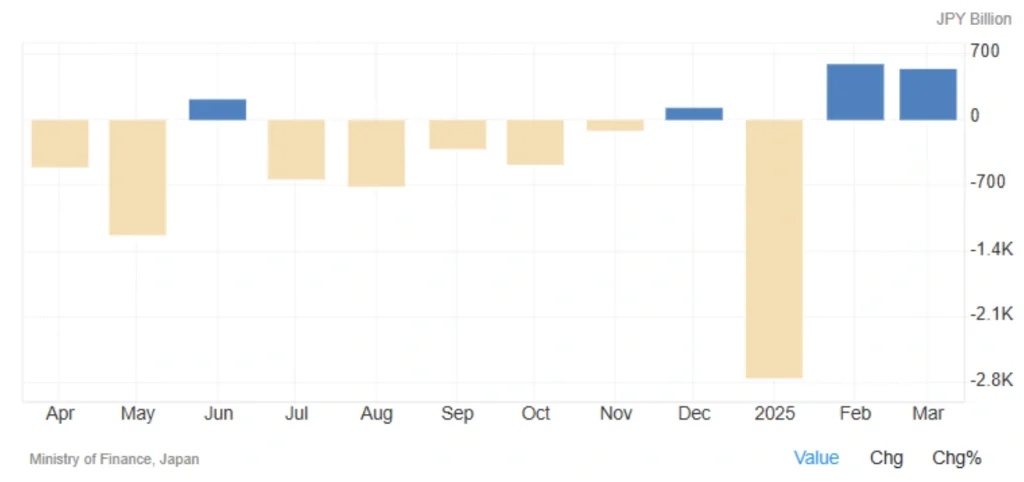
Japan’s Trade Surplus Reaches ¥544 Billion
Japan’s trade surplus for March 2025 reached ¥544.1 billion, surpassing market expectations of around ¥485.3 billion. This marks a significant increase from March 2024’s surplus of ¥349.9 billion, reflecting a strong export performance.
Japan’s Foreign Trade Details for March
✅ Exports:
- 📈 3.9% annual growth
- 💥 Total exports: ¥9,847.8 billion (highest level in the past three months)
- 📅 Sixth consecutive month of export growth
- Slightly below market expectations of 4.5% growth
- Key drivers:
- 🌏 Sustained demand from Asian markets
- ⚙️ Stronger industrial and technology exports
- 💼 Government support for export-oriented companies
✅ Imports:
- 📊 2% annual growth
- 📉 Total imports: ¥9,303.8 billion
- ✅ A recovery from the 0.7% drop in February
- Below market expectations of 3.1% growth
- Weak imports may be attributed to:
- ⛽ Falling energy and raw material prices
- 🏠 Lower domestic demand during the winter season
- 💱 Currency exchange rates and high import costs
Education: Why is Japan’s Trade Surplus Important?
- A trade surplus occurs when exports exceed imports, signaling strong manufacturing capacity and international competitiveness.
✅ For Japan, an export-driven economy, the growth in trade surplus means:
- 📈 Support for the Japanese Yen in the currency market
- 💪 Increased financial capacity for export companies
- 🚫 Reduced inflationary pressures from imports

📊 Impact Analysis: How This Data Affects Markets and Japan’s Economic Policy
🔹 Positive Signals:
- 🚚 Data indicates a strengthened export chain for Japan
- 📈 Sustained export growth could help support overall economic growth
- 🏦 In the short term, the Bank of Japan (BoJ) might use this data as a justification for policy rate stability
🔹 Concerns:
- ⚠️ Slower imports, if driven by weak domestic consumption, may signal imbalanced economic growth
- 🌍 Heavy reliance on exports, especially amid global trade volatility, is a risky strategy
✅ Conclusion
Japan’s impressive trade surplus in March 2025 highlights the strength of its global competitiveness. However, for future sustainability, it’s crucial to strike a better balance between exports and domestic demand. This data points to Japan’s resilient trade sector, but policymakers must also focus on domestic economic growth.
Share
Hot topics

Best Forex Trading Hours for Iranian Traders
The Forex market operates 24-hours a day, but clearly not every hour, equal it could even be every trading session, is profitable. There are times when the market sleeps, is...
Read more




Submit comment
Your email address will not be published. Required fields are marked *